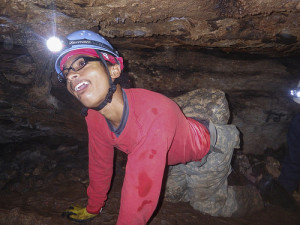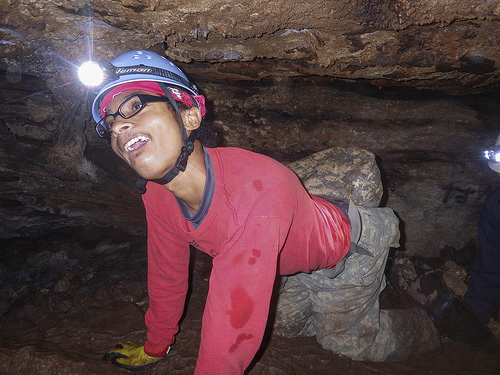I often get people asking me how they can move into another field, or how to identify other occupations and careers that will use their skills.
Be forewarned: this exploration takes time and effort, and you may feel like you are in the dark for quite a while. You will learn a lot, and you can’t make a mistake, because every choice and experience is an opportunity to learn. Gradually you’ll come to a better understanding of what will be a “right fit job” or career for you.
Here are some suggestions for how to begin.
1) If you already know the skills you like using, I recommend using those skills as search keywords. Enter them into LinkedIn’s job search, into Indeed.com, and into Idealist.org (for non-profits). See what jobs come up. Read the job descriptions that seem to call to you. If the jobs do in fact appeal to you, save the jobs for future reference (I’d make a Word document that contains all of them). You can then look at the other skills and responsibilities in these job descriptions and search for jobs that contain those keywords. It’s a little like following a trail, like you’re on a hunt for something elusive and you’ll know it when you see it.
2)
If you don’t have much idea about the skills you want to use, then I suggest a site called http://sokanu.com as a first place to begin identifying potential job options. The free version gives you quite a lot of career options. There’s a main questionnaire and there’s a personality questionnaire. Based on answers to both, they suggest potential occupations. When you go to your Dashboard (found by clicking the link at the bottom left of the page), you can click on the occupations and learn more about them. You’ll get a sense of what skills are required, what education might be called for, and what career ladder is required.
For more exploration of possible careers and jobs, there is the Bureau of Labor Statistics Occupational Outlook Handbook (http://www.bls.gov/ooh/). Their site says “
The OOH can help you find career information on duties, education and training, pay, and outlook for hundreds of occupations.” While it doesn’t have the capability to search by skill, you can searchby occupational group, e.g. Media and Communications (
http://www.bls.gov/ooh/media-and-communication/home.htm). There are lists of occupations, and individual jobs, and each occupation has tabs that contain a TON of information about jobs, skills they use, educational requirements, work conditions, etc.
3) Gather more information from people via informational interviews. People are the best source of information about what a job is like. Use your Intention Statement to network with people who are doing work that interests you. On LinkedIn, you can search for people by skills or titles. You can go through your connections’ connections and see if there is anyone you want to meet and learn more. From these people, you can learn more about what it would mean to do the kind of work their firm does. Without more information about specific fields, it’s really hard to know if you’ll like doing something.
More ways to find people on LinkedIn:
- You can find alumni and search based on when they graduated, where they work, and what they are skilled at.
- You can target companies for which you want to work and see if you have any connection to the company. When you find someone who seems to be doing something interesting, see if you have any connection to them.
If you have a 2nd or 3rd degree connection to the person, you can ask to be introduced to them. Go to their profile page, and scroll down, looking at the right-hand column. You should eventually come to a section called “How You’re Connected.” It will show you people you’re connected to who are connected to this person you want to do an informational interview. If you are not connected, you can sign up for Premium Jobseeker. You’ll get 3 free InMails (a private LinkedIn-only email messaging capability) per month and can reach out to 3 people a month that way.
What all of this means is that you will first need to build your first-degree network, people with whom you are directly connected. By having a list of 150+ first-degree connections, you will have access to all of their first degree connections aka your second degree connections. It’s exponential.
Here is a blog post of mine that addresses how to ask for an informational interview: http://myrightfitjob.com/2008/08/14/294/ It’s easier for people to give you time when you seem to have an idea of what you want to do, or at least the skills you want to use. You can say
“I want to use my people management, writing/content creation, and project planning and management skills, and I’m not quite sure what’s out there. I’ve done some research and you are someone who’s doing something really interesting to me. Would you be open to spending 20 minutes with me to share your journey, how you got to this position?” Most people are flattered by such a request.
4) Consider that your next job is going to be a way station, a building block, a way for you to get more experience in the work world. You’ve done a lot at one place, and it may be that you need to view the next job as just that – the next job. It will give you more work experience, expose you to other work cultures, and provide you with an opportunity to learn more about what you like and don’t like. Most people, myself included, have a few jobs at the beginning of our careers that aren’t ideal. Each does contribute something to our skill set and experience base – as much a “I never want to do this again” as a “I enjoy this kind of work.”
A book called “Working Identity” by Herminia Ibarra calls for “experimenting” to see what you like and don’t like about a field. She emphasizes, as do I, that exploration takes time. Most of the career changers in her book talk about taking 2 1/2 to 3 years to find their new groove. Most began with a wish to use a particular skill or have a specific impact. That’s why I always start with your skills. Each step took them closer, every “yes” they gave to a new experience allowed them to gather more information about their potential new choice. If you have the budget to buy that book, I recommend it. Or a library will have it.
5) Ask yourself if there is a career or occupation you always wanted to do, or that you would have wanted to pursue if you’d only known about it in high school or college. Then go ahead and learn more about it. You may well be able to transition into that field – perhaps not doing the actual job, but doing something related. For example, if you wanted to be an astronaut, it may be too late for that. But is it too late to work for NASA or Boeing, Lockheed Martin, Bigelow Aerospace, SpaceX, Virgin Galactic, or other firms working on space travel, rockets, etc? Even these firms need lawyers and accountants. Or maybe you learned that there is such a thing as a music producer and you love music. I’d explore what is involved in being a music producer. Perhaps there is a way to do that work. Or perhaps there is another way to work in the music industry, or to use the skills required for a music producer. Research, talk to people. You never know what will happen during your exploring.
I hope this gives you some good ways to begin your exploration.



